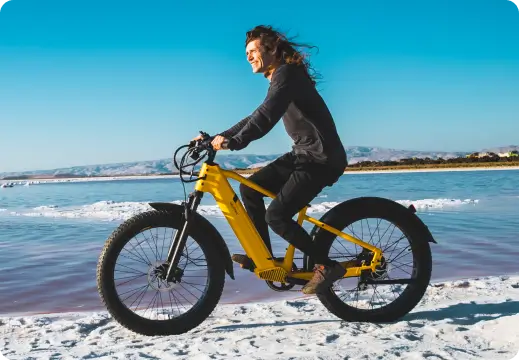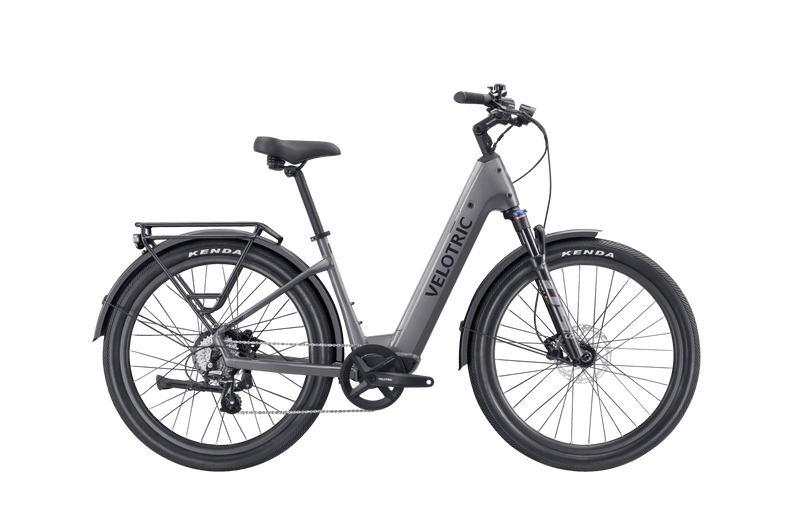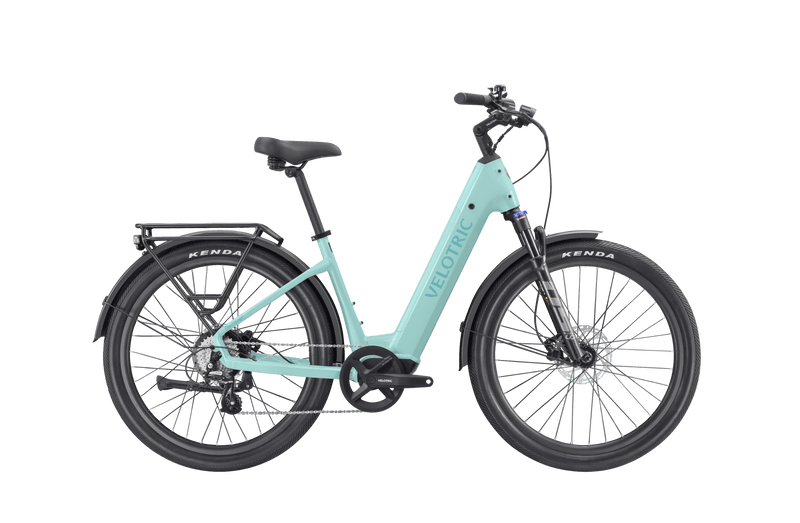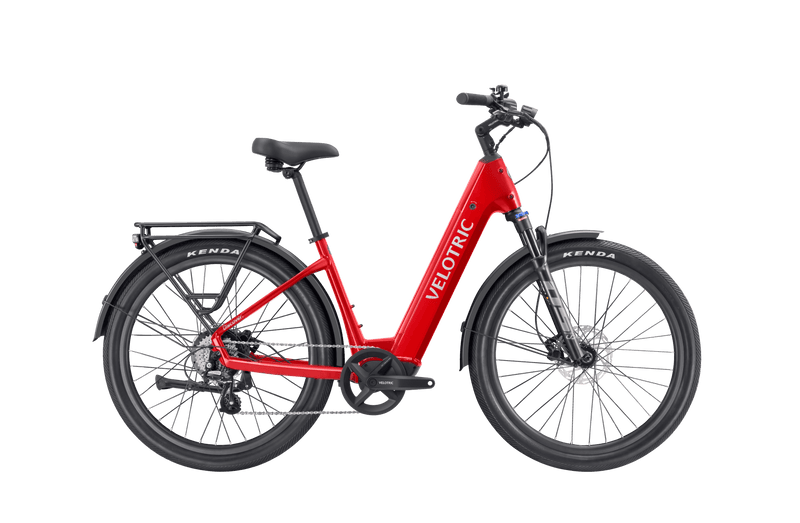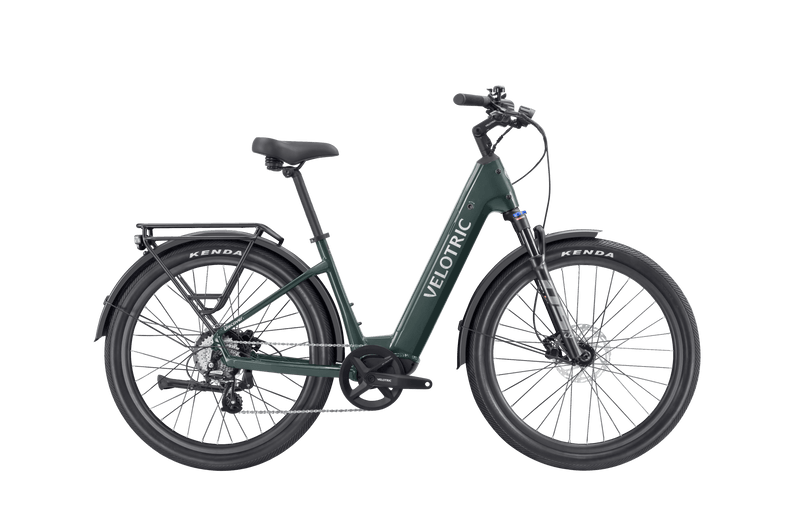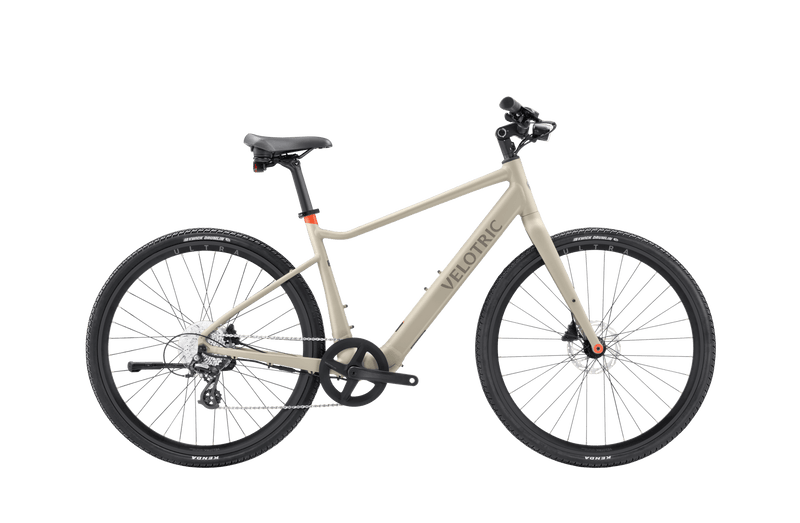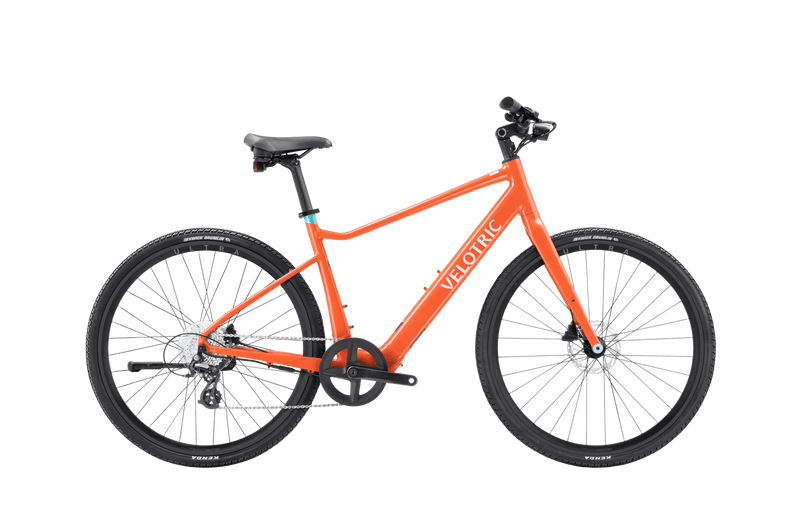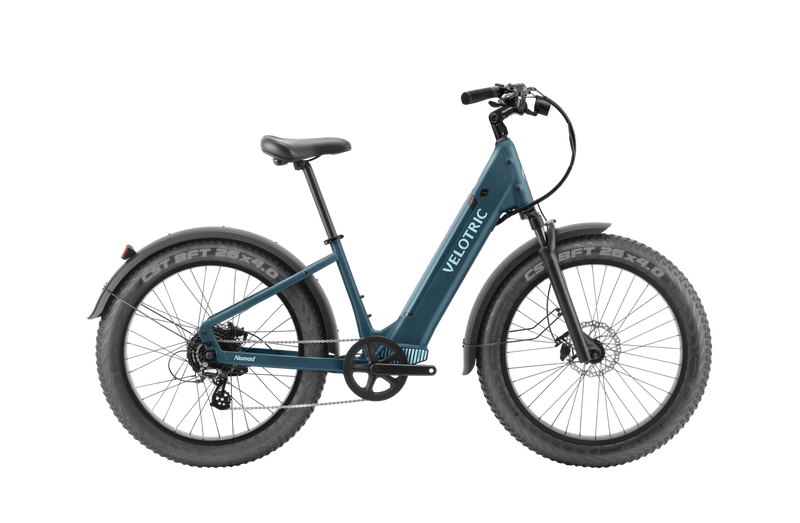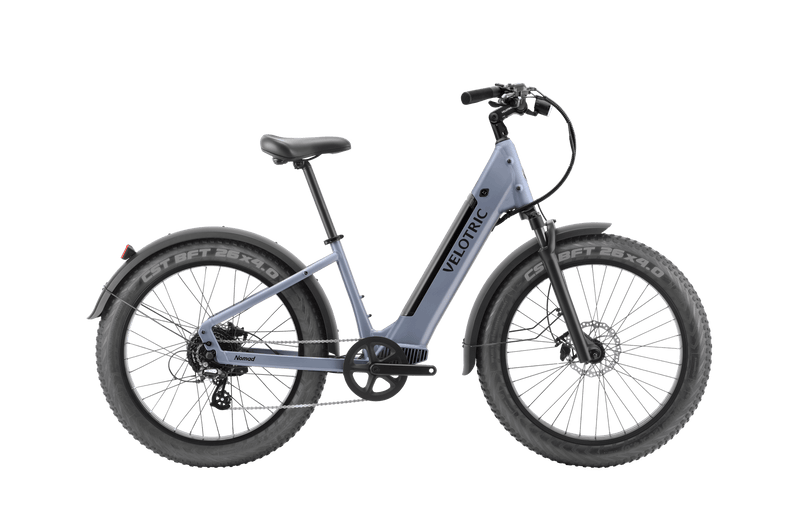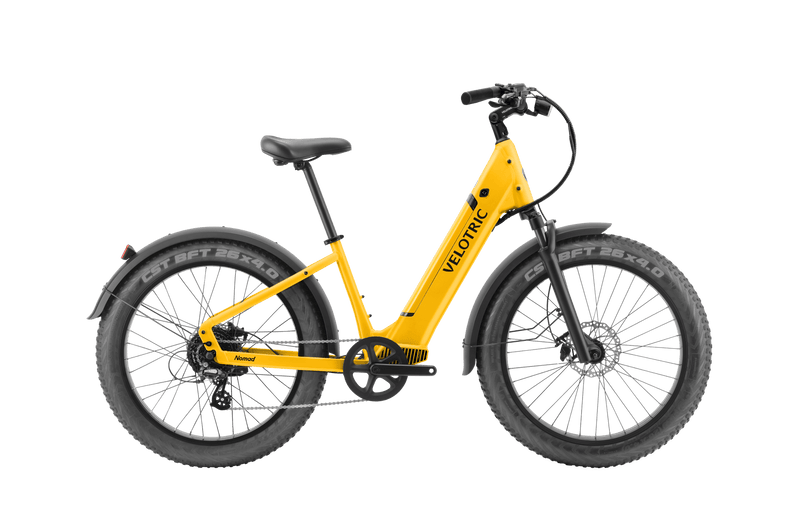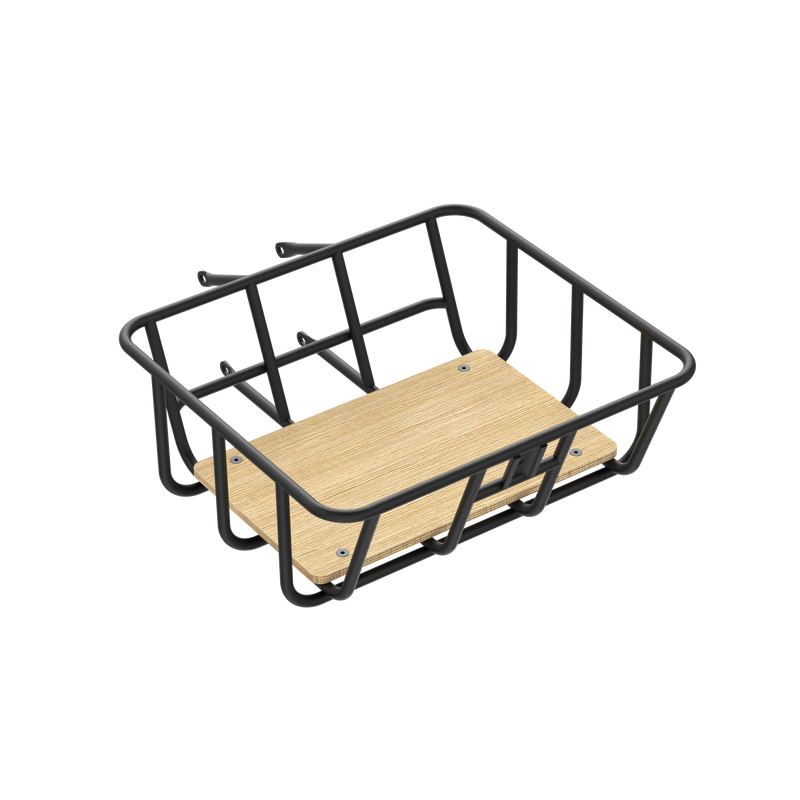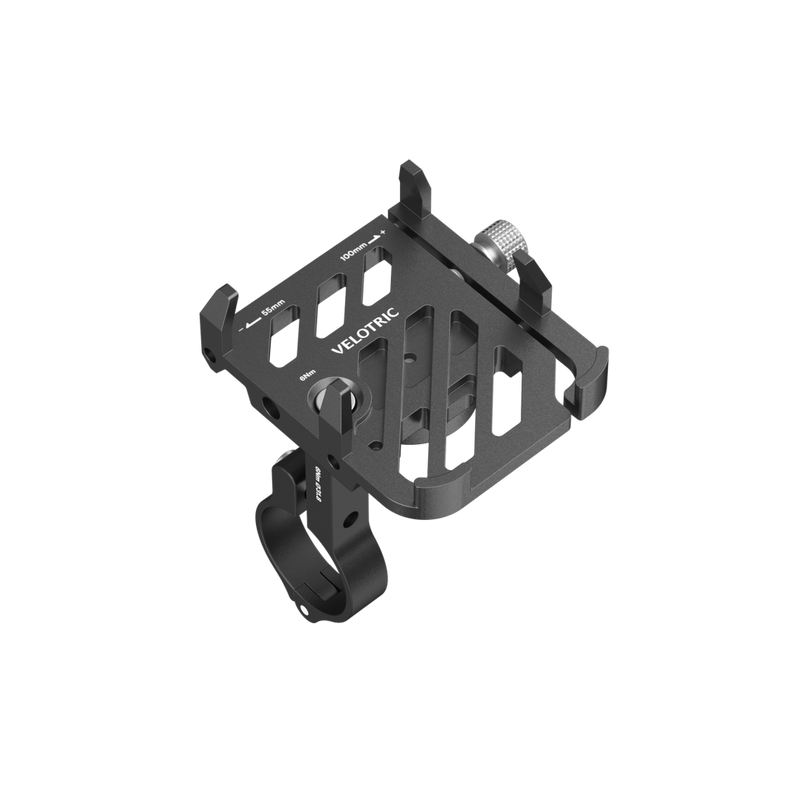If you're getting ready to buy a bike, you're probably already thinking about fun details like what color you want.
But before you start dreaming about the perfect neon-green or fuschia ride, you've got to consider some technical aspects — like the type of frame you’ll choose. We hate to break it to you, but it's more important than the color!
Everyday cyclists (people who aren't BMX bikers or professional road racers) usually have either a high-step bike frame or a step-through bike frame. The type of frame you choose can impact your riding experience (we'll explain how below), so you want to choose wisely.
Now, if you don't have a lot of experience as a cyclist, the terms high-step and step-through might not mean much to you.
Don't worry: We've got you covered. Read on to learn about the differences between step-through and high-step frames and how to pick the right option for you.
What are step-through and step-over bikes?
Step-over bikes have a diamond- or triangle-shaped frame. Also known as high-step bikes, they feature an extra frame tube that runs from below the head tube at the bike's front to the back wheel. This top tube is what creates the frame's diamond or triangle shape. In contrast, step-through bikes lack this extra frame tube.
That's the big difference between these two bike frames. While it doesn't seem like a huge deal, it plays a big part in how you get on and off the bike.
With a step-through frame, you can simply lift your foot and step into the bike, right behind the handlebars, so that you're straddling the frame.
With a step-over bike, it's a bit more complicated: You have to hoist one foot up and over the back of the bike in order to straddle the frame and get on the seat (hence the name "step-over" — you're literally stepping over the frame to mount and dismount the bike).
If you take a look at Velotric's high-step versus step-through models, you can see the difference for yourself: The high-step bike has an extra frame tube running from just below the handlebars to under the bike's seat post (see the triangle/diamond-shape it makes?). The step-thru model doesn't have this extra bar.
Of course, the manner in which you get on and off the bike isn't the only way that step-through and step-over bikes differ. Read on for some more pros and cons of each bike frame.
Pros and cons of step-through bikes
Think a step-through bike might be for you? These frames have a few key benefits, including the following:
- Easy mounting and dismounting. The most obvious benefit of low-step frames is that they're easier to mount and dismount. You won't have to deal with hoisting your leg over the back wheel to get on.
- Kinder on your clothes. Since step-through bikes don't require you to lift a leg over the back wheel and seat to get on, they don't stress your clothes as much. They can be great if you wear skirts or dresses — or super tight pants that don't allow for an extreme leg lift. The last thing you want is to rip your pants down the middle while getting on your bike!
- Ideal for running errands. Step-through bikes are great for running errands that might require you to mount and dismount frequently. For example, if you're a delivery driver that makes a lot of stops throughout the day, you might want the ease of a step-through frame.
Step-through bikes may be easier to mount and dismount, but they also have some disadvantages. Here are some of the cons:
- More unwieldy. Step-through bikes are missing the top frame tube of a step-over bike, which might make it seem like they should weigh less. The truth is that step-through bikes generally need to be constructed more robustly than step-over bikes — exactly because they lack this extra frame tube and the stability it offers. As a result, step-through models can be bulkier and heavier, making them unwieldy to maneuver.
- Not suitable for tough terrain. Since step-through bikes lack the stability of the extra frame tube featured in a step-over bike, they also aren't as well-suited for rough terrain. For example, if you're going to ride on unpaved surfaces, a step-over frame is definitely preferable to a step-through frame. In general, the step-through frame is better for everyday casual riding, like biking to work; save your off-roading for a step-over bike.
Pros and cons of step-over bikes
Step-over bike frames have their own pros and cons. Here are some of their advantages:
- Sturdy. The extra frame tube of the step-over bike helps stabilize the frame as a whole. As a result, step-over bikes tend to be more sturdy and durable than step-through bikes. The triangle/diamond-shaped frame results in a more robust and long-lasting bike.
- Lightweight. Step-over bikes have added stability thanks to the extra frame tube running from below the handlebars to below the seat post. As a result, they don't need to be constructed as robustly as the less stable step-over models. Step-over bikes are generally lighter, which can also make them easier to maneuver.
- Better suited for difficult terrain. The added stability of a step-over bike model also makes it better for difficult surfaces. If you're going to be riding on unpaved surfaces or inclines, a step-over frame is preferable. However, note that step-over bike frames aren't as durable as mountain bikes — if you're going to be doing serious trekking, a MTB frame is a must.
That said, step-over bikes also have some drawbacks. Here are some of the cons to consider:
- Challenging to mount and dismount. High-step or step-over bikes may be more difficult to get on and off. Since they require you to swing a leg up and over to mount, they may not be suitable for elderly people or those with limited mobility. Limited accessibility aside, it can just be annoying to get on and off the bike, especially if you're wearing constricting clothing.
- Limited usage options. While step-over bikes are more durable than step-through bikes, they aren't a one-size-fits-all solution. For example, if you're going to be racing professionally, you want a road bike. If you want to take up BMX, you need a BMX-specific frame with the appropriate suspension and derailleur for managing jumps and extreme inclines.
Step-through vs step-over bikes: Which is better?
If you skipped down to this part of the article hoping to get a quick answer to the question of which bike frame is better, we've got news: There's no one right answer. It largely depends on your specific needs, but we can help narrow it down for you.
A step-through bike frame isn't inherently better than a step-over bike frame — and vice versa. The "best" frame for you depends on some of these personal factors:
- Size. High-step bike frames are able to more easily accommodate taller riders. For example, Velotric's step-through bike frame is designed for cyclists from 5’1” to 6’4”, while the high-step bike frame is designed for cyclists from 5’6” all the way up to 6’9”.
- Your reason for riding. Context makes a big difference when selecting a bike frame. If you're commuting to work, you might want a step-through commuter bike frame that will be kinder to your formal attire when you're mounting and dismounting. If you're riding for exercise, you might want a step-over model that's better suited to hills — perfect for breaking a sweat! Another example: If you're using an e-bike for delivery driving, you might want a step-through frame, since you'll be getting on and off your bike a lot.
- Where you'll be riding. As mentioned, step-through frames are better suited for flat surfaces. In contrast, step-over frames can better accommodate inclines. So if you're going to be primarily riding on city roads, a step-through frame is fine — but if you plan on tackling hilly terrain, opt for a step-over frame for greater stability.
Finally, keep in mind that the bike frame alone doesn't make for the perfect fit. You need to adjust details like the seat height and handlebars to achieve the right posture (for example, a lower versus upright riding position). Find out more from our guide to bike fitting.
PS: Bike frames also differ in terms of materials. For example, there are aluminum frames, steel frames, and others to choose from. We talk more about frame materials in our comprehensive guide to bike frames.
What about e-bikes? E-bike frame designs
Just like traditional bikes, electric bicycles can come in step-through and step-over frames. However, e-bike frames need to accommodate additional components, like the bike's battery, which is what powers the bike's motor.
The e-bike motor is what distinguishes an e-bike from a standard bike. It can power a pedal assist system (PAS), which helps power the bike forward while the cyclist is pedaling. More powerful motors can also include throttle assist functionality, in which the bike moves forward even when the cyclist isn't pedaling.
Exactly how the e-bike motor is integrated into the frame depends on the type of motor. For example, a mid-drive motor is located in the center of the frame, between the front wheels and back wheels. A hub motor is located at the back of the bike frame. You can learn more about mid-drive versus hub motors from our guide.
The general advantages and disadvantages of a step-through versus step-over frame apply to e-bikes as well — so you can still use the above list of pros and cons when selecting the right frame for your needs.
Discover Velotric step-thru and high-step e-bikes
Velotric bike shop's e-bikes come in both step-thru and high-step models, so you can choose the one that's right for your needs. The high-step is better suited for rider heights 5’6” to 6’9,” while the step-thru is better suited for rider heights 5’1” to 6’4.”
Choose the bike frame that's right for you — in the bike style that's right for you. The Discover e-bike has a 500W (900W peak) motor, while the Nomad has a 750W motor. PS: If you don't know what these numbers mean, read our guide to e-bike motors.
The Nomad is also distinguished by its fat tires, which make it better suited for offroading on surfaces like grass and dirt. Since it's heavier than the Discover, the Nomad has a slightly smaller range: 55 miles, compared to the Discover's 65 miles.
Whichever bike you choose, it will come equipped with a Tesla-grade 48V 14.4Ah lithium-ion battery. Use the provided charger to fuel up your e-bike's battery completely in just six hours.
Both bikes' batteries are certified by the global standards safety organization Underwriters Laboratories (UL2271), and the frames have been tested more than 150,000 times for quality control. The result? A safe, high-quality electric bike you can trust.
Safety features include Shimano hydraulic disc brakes, front and rear fenders, and front and back lights — plus reflectors for easy visibility. You can also get extras for convenience, like a rear rack.
Find the right frame for your riding style by scheduling a test ride.






































